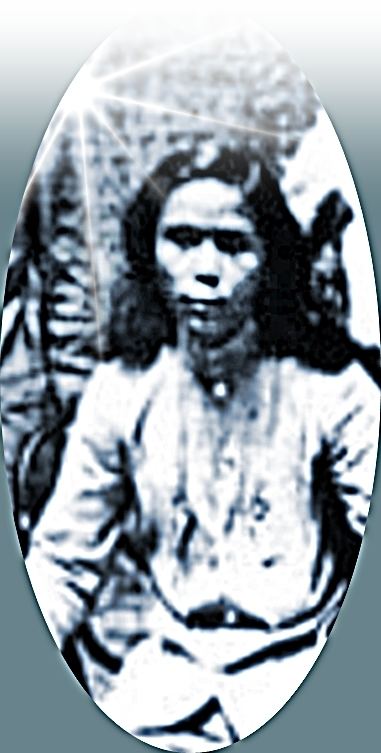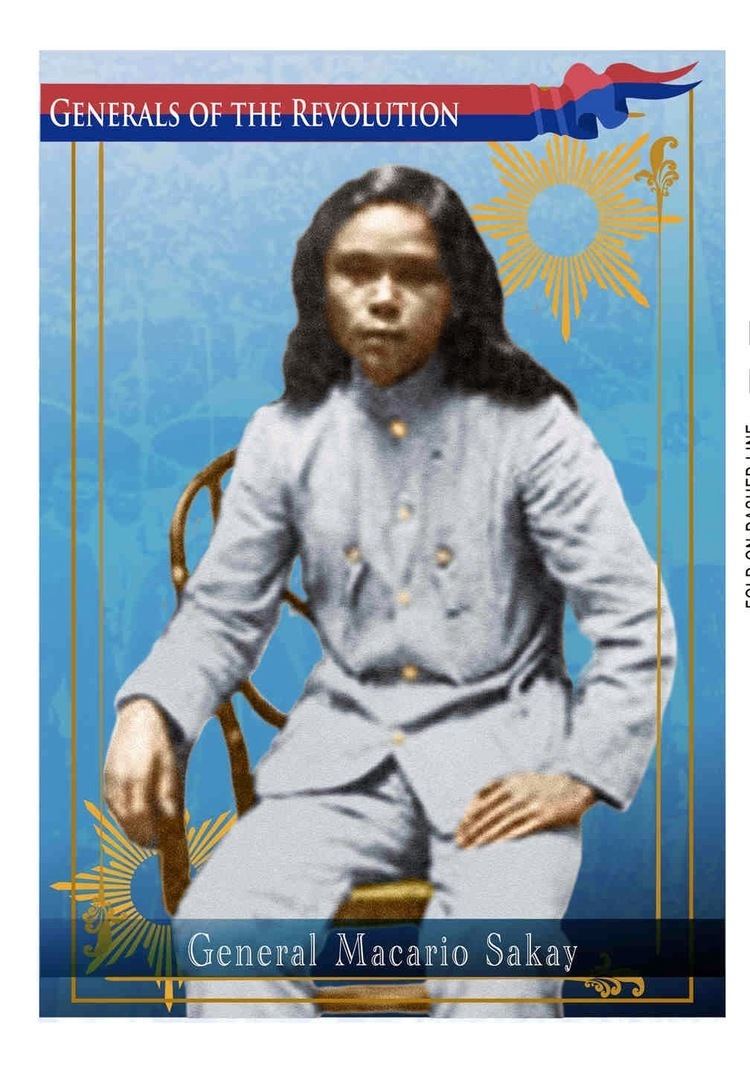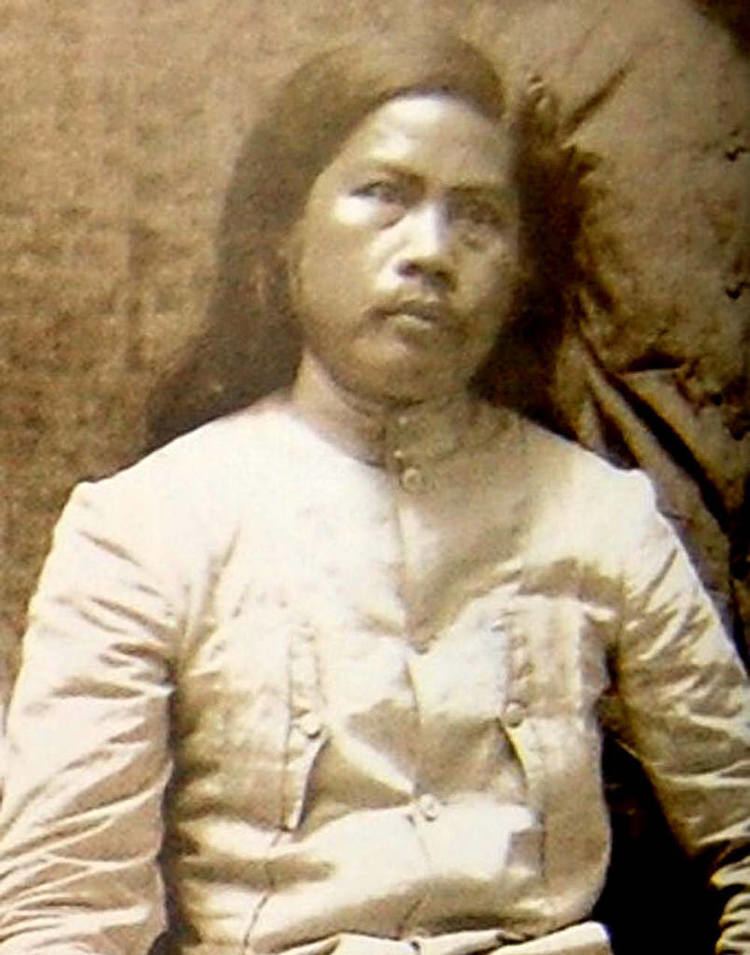Vice President Francisco Carreon Religion Roman Catholicism | ||
 | ||
Succeeded by Abolishedtitle next held by Manuel Quezon Full Name Macario Sakay y de Leon Died September 13, 1907, Manila, Philippines Similar People Miguel Malvar, Artemio Ricarte, Raymond Red, Emilio Aguinaldo, Antonio Luna | ||
Profession RevolutionaryMerchant | ||
Macario Sakay y de León (c. 1870/8 – September 13, 1907) was a Filipino general who took part in the 1896 Philippine Revolution against the Spanish Empire and in the Philippine-American War. After the war was declared over by the United States in 1902, Sakay continued resistance and the following year became President of the Republic of Katagalugan.
Contents
- Early life
- After the war
- Sakay and the Aguinaldo regime
- Tagalog Republic
- Military organization
- Planned kidnapping
- Surrender and betrayal
- Legacy
- In popular culture
- References

Early life

Sakay was born around 1869 or 1878 along Tabora Street, Tondo, in the City of Manila. He first worked as an apprentice in a kalesa (carriage) manufacturing shop. He was also a tailor and a stage actor, performing in a number of plays including Principe Baldovino, Doce Pares de Francia, and Amante de la Corona. An original member of the Katipunan movement, of which he joined in 1894, he fought alongside Andrés Bonifacio against the Spanish throughout the Philippine Revolution. In 1899, he continued the struggle for Philippine independence against the United States. Early in the Philippine-American War, he was jailed for seditious activities, and later released as part of an amnesty.
After the war

Sakay was one of the founders of the Partido Nacionalista (unrelated to the present Nacionalista Party founded in 1907), which sought to achieve Philippine independence through legal means. The party appealed to the Philippine Commission, but the Commission passed the Sedition Law, which prohibited any form of propaganda advocating independence. Sakay thus took up arms again.
Sakay and the Aguinaldo regime
Contrary to popular belief, the Philippine resistance to American rule did not end with the capture of Gen. Emilio Aguinaldo, and several forces remained at large. One of these forces was led by Sakay.

Sakay's rank and association within Aguinaldo's Revolutionary Government is unknown, but when Aguinaldo surrendered to the US, Sakay seized the leadership of the revolution and declared himself Supreme President of the Tagalog Republic, which he said included all the islands of the Philippines from Luzon to Mindanao. Taking over the Morong–Nueva Ecija command and assigning his deputies to take charge of the other Tagalog regions, Sakay wrote a constitution in which traitors, or supporters of the enemy, were to be punished with exile, imprisonment, or death. In May 1902, Sakay and his men declared open resistance to the US that lasted for several years.
Tagalog Republic
Around 1902 Sakay established the Tagalog Republic somewhere in the mountains of Rizal. His first military circulars and presidential orders as "President and Commander-in-Chief" came in 1903. Sakay's military circular No. 1 was dated May 5, 1903, and his Presidential Order No. 1 was dated March 18, 1903.
Military organization
In Sakay's military circular No. 7, dated June 19, 1903, the government of the Tagalog Republic (called the "Republic of the Philippines") affirmed the formation of an organized army. The army units were composed of Kabohans (eight soldiers, equivalent to a squad), Camilleros (nine soldiers), Companias (117 soldiers, equivalent to a company, and Batalions (801 soldiers, equivalent to battalion). However, in Sakay's Second Manifesto, dated April 5, 1904, it was said that the exact number of soldiers in his army could not be ascertained. There are insufficient documents to speculate on the size of the Republic's army, but they do demonstrate that Sakay's army existed and that it was made up of officers appointed and commissioned by Sakay himself.
In Sakay's presidential order No. 2, dated May 8, 1903, the government, in search of sources of weapons to carry out its struggle against the Americans, stated that it was willing to confer military rank on citizens who could turn over firearms to the Presidential Office or any of the headquarters under its command. Ranks would be conferred on the following schedule: 10 to 15 firearms, the rank of lieutenant; 16 to 25 firearms, the rank of captain; 26 to 36 firearms, the rank of major; 40 to 50 firearms, the rank of colonel. In Sakay's military order No. 5, dated May 25, 1903, the government assigned the following color codes for the divisions of its army: artillery (red), infantry (light blue), cavalry (dark blue), engineering (dark brown), chief-of-staff (dark green), sanitary (yellow), and marines (gray).
Planned kidnapping
According to General Leon Villafuerte, his, Carreon's and Sakay's forces planned to kidnap Alice Roosevelt Longworth, the daughter of President Theodore Roosevelt. The plan was to trade her with the Americans in exchange for the immediate recognition of Philippine independence. The kidnapping was not attempted since Longworth postponed her trip by train to Baguio.
Surrender and betrayal
In 1905, Filipino labour leader Dominador Gómez was authorised by Governor-General Henry Clay Ide to negotiate for the surrender of Sakay and his men. Gómez met with Sakay at his camp and argued that the establishment of a national assembly was being held up by Sakay's intransigence, and that its establishment would be the first step toward Filipino independence. Sakay agreed to end his resistance on the condition that a general amnesty be granted to his men, that they be permitted to carry firearms, and that he and his officers be permitted to leave the country. Gómez assured Sakay that these conditions would be acceptable to the Americans, and Sakay's emissary, General León Villafuerte, obtained agreement to them from the American Governor-General.
Sakay believed that the struggle had shifted to constitutional means, and that the establishment of the assembly was a means to winning independence. As a result, he surrendered on 20 July 1906, descending from the mountains on the promise of an amnesty for him and his officials, and the formation of a Philippine Assembly composed of Filipinos that would serve as the "gate of freedom". With Villafuerte, Sakay travelled to Manila, where they were welcomed and invited to receptions and banquets. One invitation came from the Constabulary Chief, Colonel Harry H. Bandholtz; it was a trap, and Sakay along with his principal lieutenants were disarmed and arrested while the party was in progress.
At his trial, Sakay was accused of "bandolerismo under the Brigandage Act of Nov. 12, 1902, which interpreted all acts of armed resistance to American rule as banditry." The American colonial Supreme Court of the Philippines upheld the decision. Sakay was sentenced to death, and hanged on 13 September 1907. Before his death, he made the following statement:
Death comes to all of us sooner or later, so I will face the LORD Almighty calmly. But I want to tell you that we are not bandits and robbers, as the Americans have accused us, but members of the revolutionary force that defended our mother country, the Philippines! Farewell! Long live the Republic and may our independence be born in the future! Long live the Philippines!
He was buried at Manila North Cemetery later that day.
